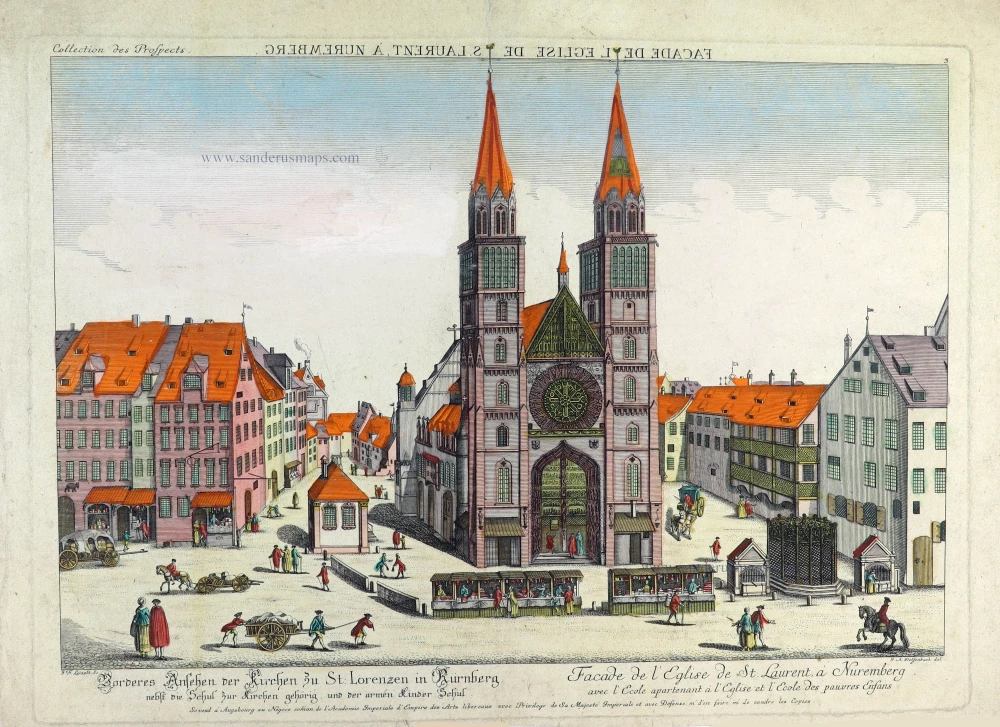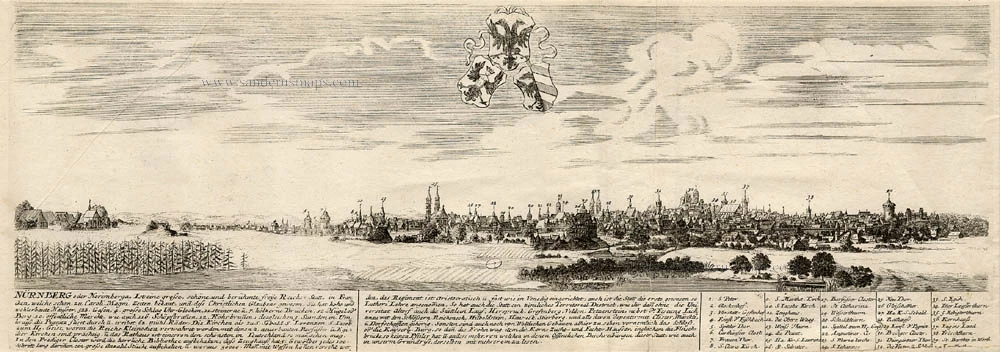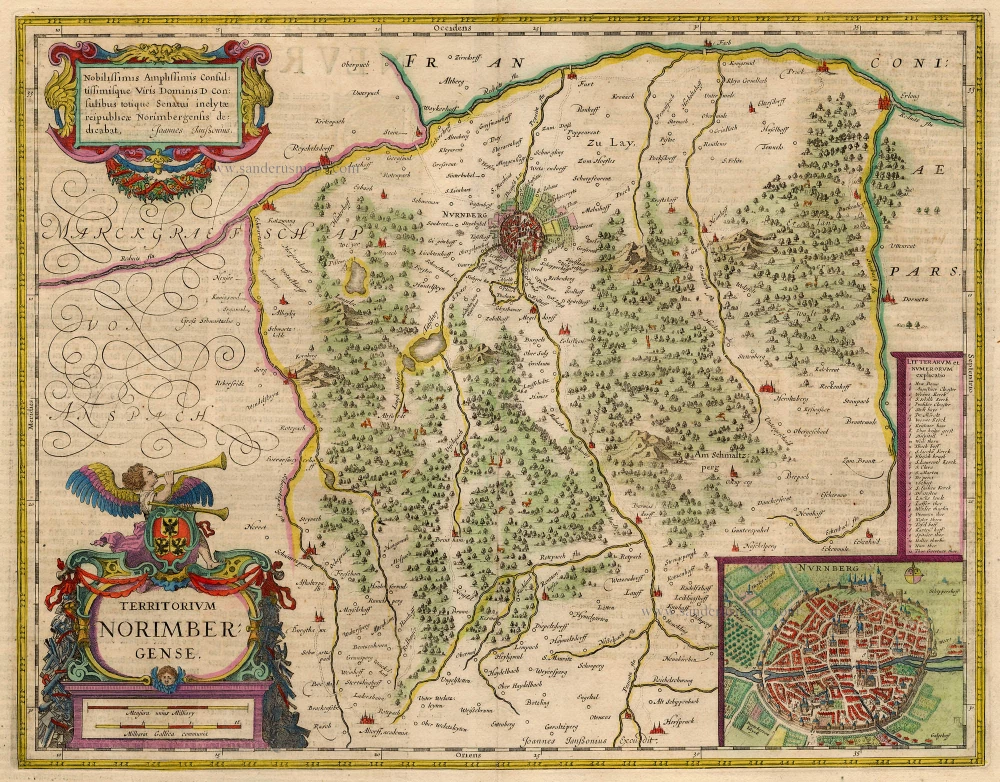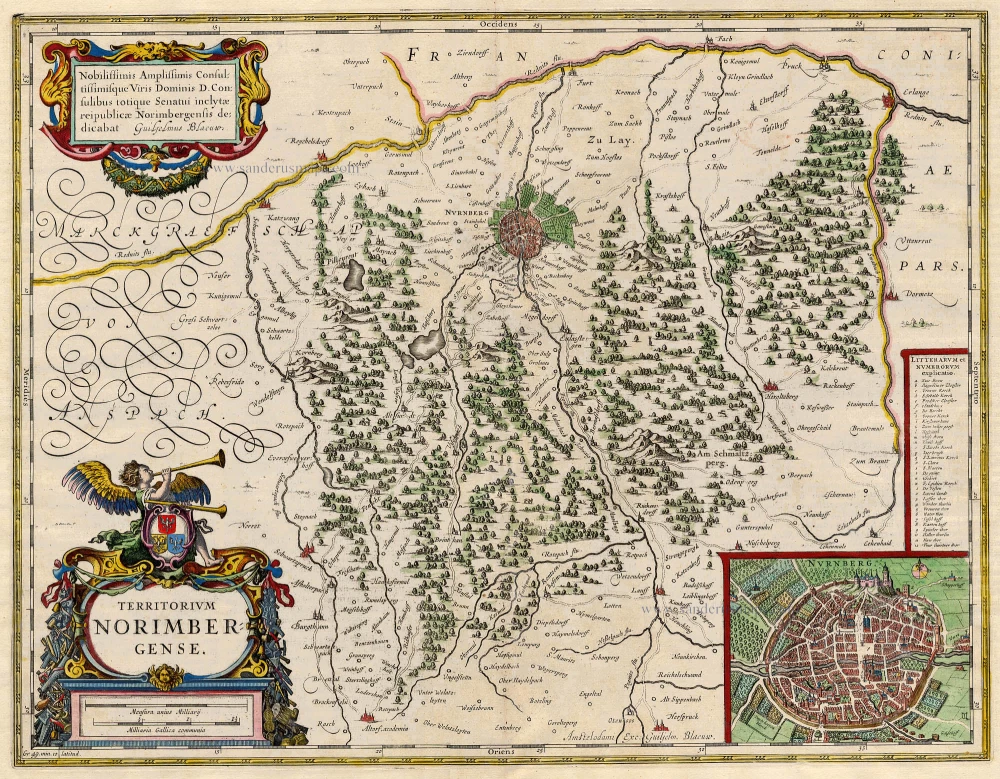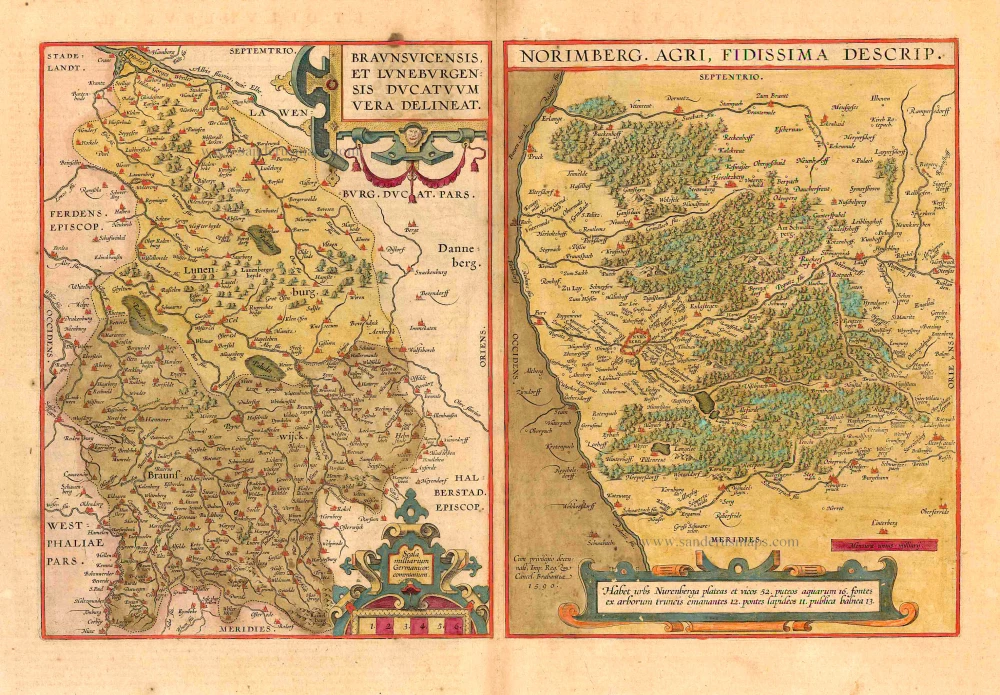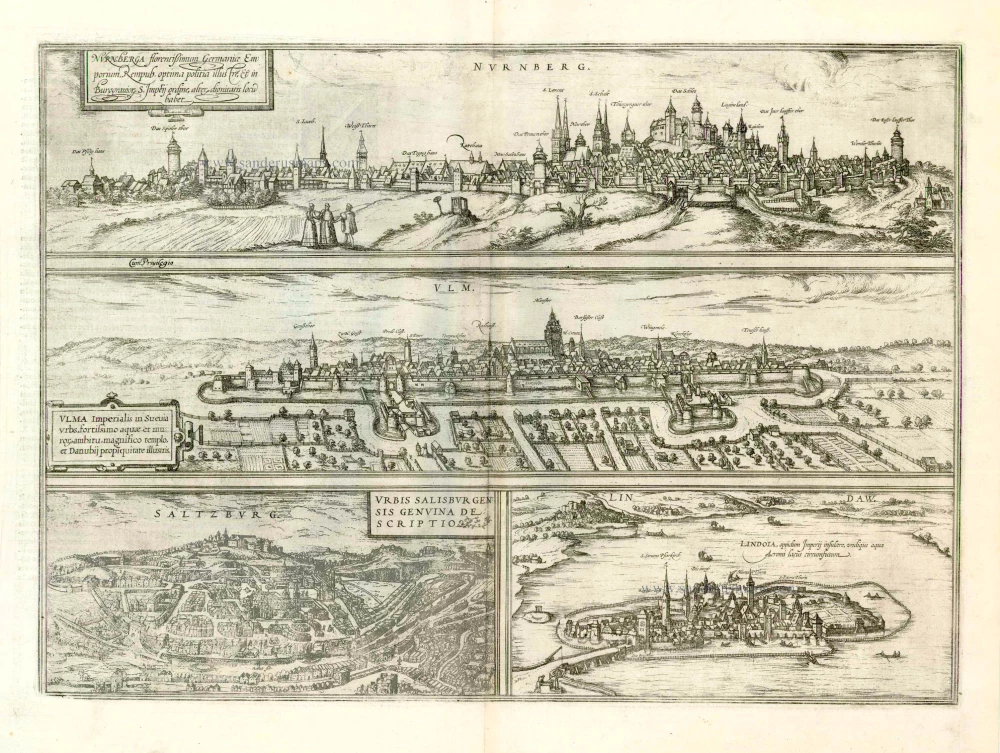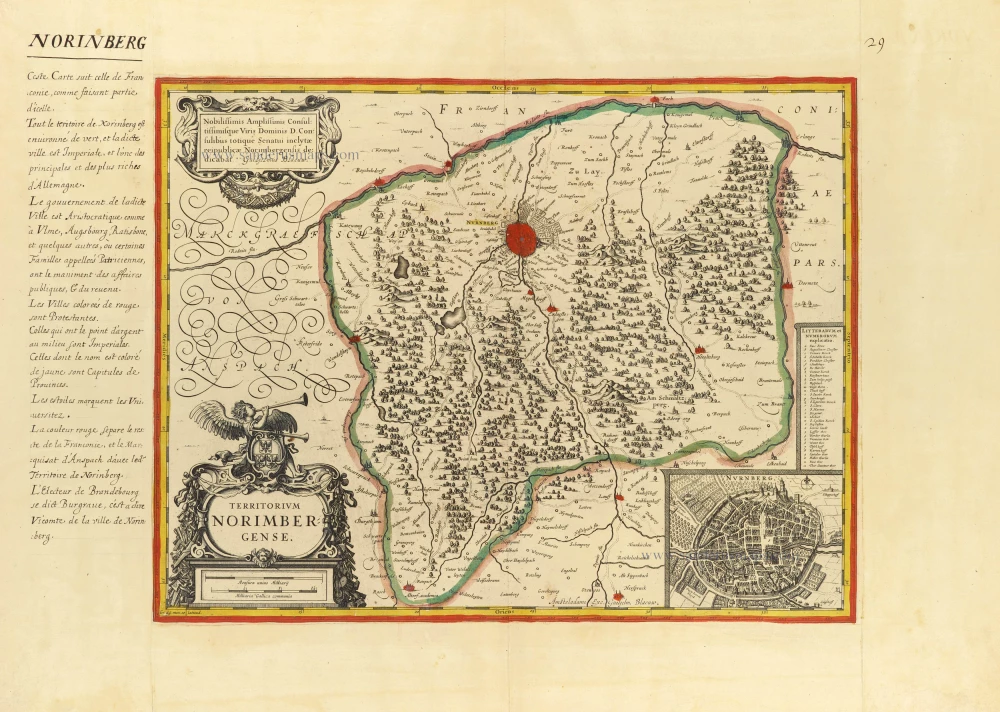Optical view of the Church of St. Lorentz in Nuremberg, by J.F. Leizelt after J.A. Delfenbach. c. 1730
Optical View (French: Vue d'optique)
An optical view is a type of 18th-century hand-coloured engraved print to be viewed through a special optical device. It depicts architectural, city, or landscape scenes and is designed to give a strong illusion of depth and perspective when seen through a magnifying lens or viewing box. Characteristic of an optical view is the reversed inscription: The titles or captions were often printed backwards, because the viewing device used a mirror that would flip the image right-side up again. The artists enhanced depth with bold converging lines and bright colours. The optical views were used for popular entertainment and education, a way for people to "travel" visually. They originated in France and England around the 1740s and became fashionable across Europe. They were often sold by travelling print sellers or displayed in fairs and parlours.
Vorderes Ansehen der Kirchen zu St. Lorenzen in Nürnberg nebst die Schul zur Kirchen gehörig, und der armen Kinder Schul
Item Number: 32309 Authenticity Guarantee
Category: Antique maps > Europe > Germany - Cities
Optical view of the Church of St. Lorentz in Nuremberg, by J.F. Leizelt after J.A. Delfenbach.
Title: Vorderes Ansehen der Kirchen zu St. Lorenzen in Nürnberg nebst die Schul zur Kirchen gehörig, und der armen Kinder Schul
Se vend à Augsburg au Negoco comun de l'Academie Imperiale d'Empire des Arts liberaux avec Privilege de Sa Majesté ...
J.F. LLeizelt Sc. - J.A. Delfenbach del.
Date: c. 1730.
Copper engraving, printed on paper.
Image size (plate): 300 x 410mm (11¾ x 16¼ inches).
Sheet size: 330 x 455mm (13 x 18 inches).
Verso: Blank.
Condition: Original coloured, good.
Condition Rating: A.
Separate publication.
Optical View (French: Vue d'optique)
An optical view is a type of 18th-century hand-coloured engraved print to be viewed through a special optical device. It depicts architectural, city, or landscape scenes and is designed to give a strong illusion of depth and perspective when seen through a magnifying lens or viewing box. Characteristic of an optical view is the reversed inscription: The titles or captions were often printed backwards, because the viewing device used a mirror that would flip the image right-side up again. The artists enhanced depth with bold converging lines and bright colours. The optical views were used for popular entertainment and education, a way for people to "travel" visually. They originated in France and England around the 1740s and became fashionable across Europe. They were often sold by travelling print sellers or displayed in fairs and parlours.

